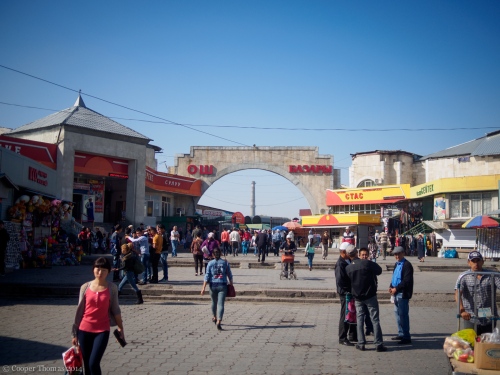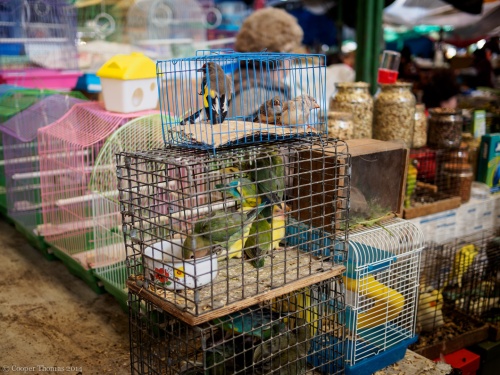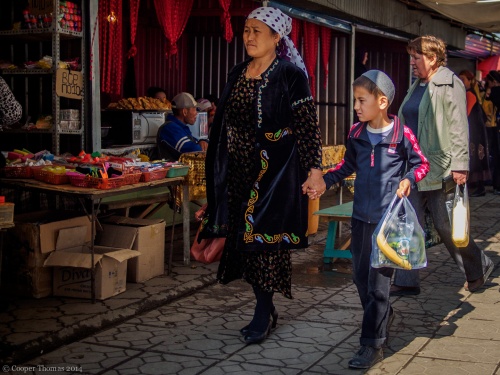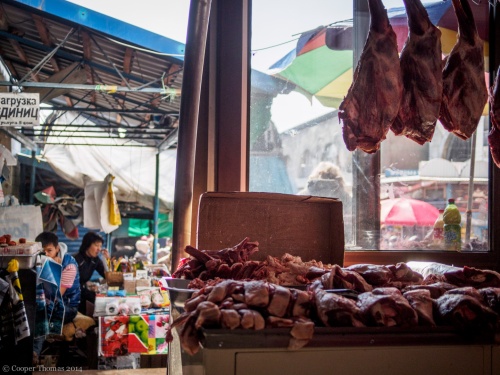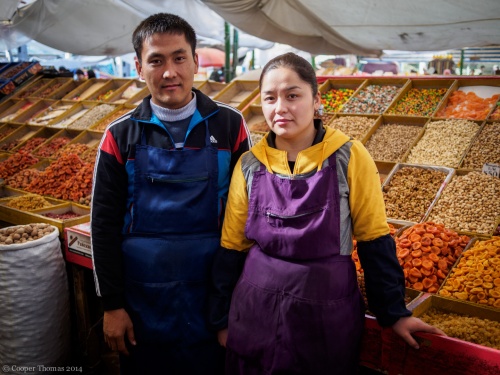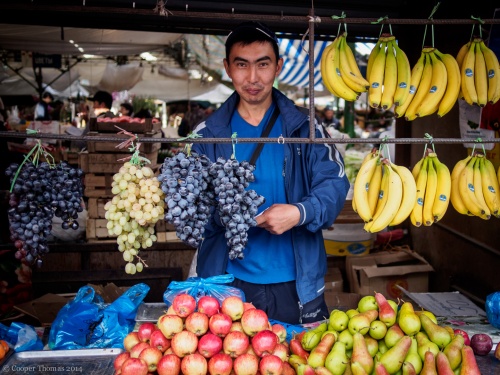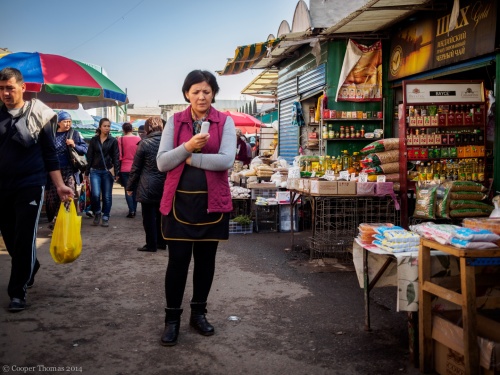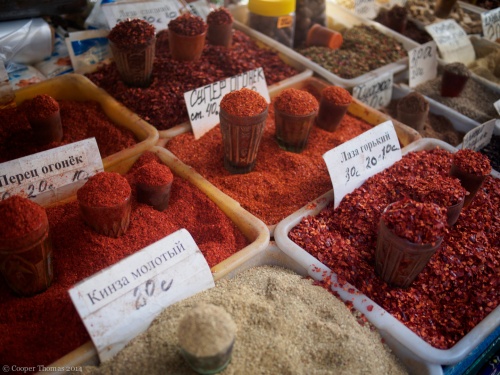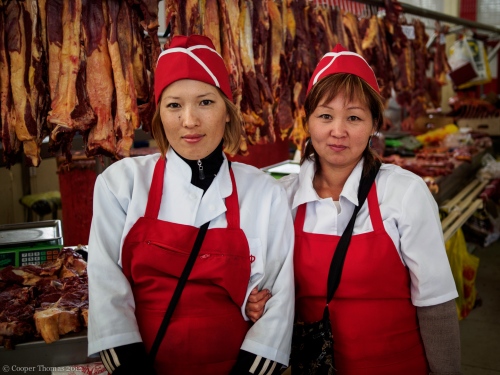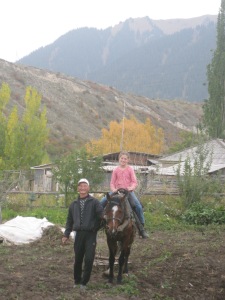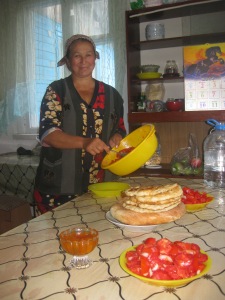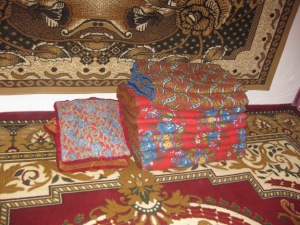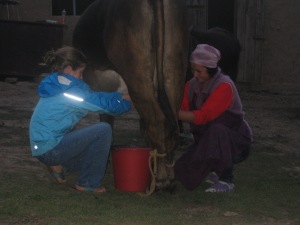Language Policy in Kyrgyzstan
While the official rhetoric of the Soviet Union extolled its constituent republics’ unity despite their myriad cultural differences, post-Soviet Kyrgyzstan, like many CIS states, has witnessed a rise in nationalistic – and in some cases xenophobic – attitudes and institutions as it strives to define and consolidate a national identity. Throughout the nation-building process, language policy has assumed a central role in discussions regarding cultural identity. The popular Kyrgyz saying “til tagdyr, el tagdyr” – “the destiny of the language is the destiny of the nation” – reflects common attitudes toward language. Kyrgyzstan is the only post-Soviet Central Asian nation that has retained Russian as an official language – and the politics of language use has developed into a proxy battlefield for larger debates about the country’s cultural trajectory.
Over the past two decades, the Kyrgyz parliament has passed handful of laws designed to prioritize the use of Kyrgyz language over Russian; however, these laws have been implemented with mixed success. The military, for example, has adopted Kyrgyz as the official language of operations, and has even published a Russian-Kyrgyz dictionary of military terms. And in May 2009, two presidential candidates were forced withdraw from elections, as they were unable to demonstrate proficiency in Kyrgyz. But many parliamentarians still speak in Russian, often provoking the ire of Kyrgyz nationalists – the same year, a parliamentarian demanded that the Minister of Labor speak in Kyrgyz, triggering a row that ended the session early.
In Bishkek, the Kyrgyz capital, it is Russian – and not Kyrgyz – that is the lingua franca. Academics, businessmen, and other well-educated elites – not to mention the sizable Russian population – conduct most of their affairs in Russian, as the use of this language allows them to engage directly with contemporaries in other Russian-speaking countries. Chingiz Aitmatov, the most famous Kyrgyz author, wrote almost exclusively in Russian, so that his works could reach a wider audience. Two-thirds of all university courses are taught in Russian, as most scientific materials are not available in Kyrgyz. Most signs are printed in Russian. Indeed, Bishkek is a thoroughly Russified city.
I’ve met a handful of ethnic Kyrgyz who’ve spent their entire lives in Bishkek, and consequently don’t speak much Kyrgyz. Sadly, these people are frequently subjected to harassment and abuse from their own compatriots, simply because they don’t speak Kyrgyz. One Russian-speaking Kyrgyz friend, Batyr, told me that he’d been violently assaulted by a group of drunken Kyrgyz-speaking men, simply because he was speaking to a Kyrgyz girl in Russian. Batyr speaks Kyrgyz fluently, and he said that he’s now more cautious about when/where he speaks Russian. Sadly, in a land where roving bands of Kyrgyz nationalists endeavor to preserve cultural heritage through whatever means necessary, it’s no wonder that some Russian-speaking Kyrgyz feel threatened.
I’ve witnessed linguistic micro-aggressions on multiple occasions. For instance, Kyrgyz-speaking marshrutka drivers will sometimes ignore Russian-speaking Kyrgyz passengers’ requests to stop, but immediately heed the requests of ethnically Russian passengers (or Russian-speaking foreigners, such as myself). Almost all marshrutka drivers speak Russian and Kyrgyz – or at least understand basic commands in Russian – but feign ignorance just to piss off their Russian-speaking compatriots. Similarly, I’ve seen street vendors speak Russian to ethnic Russians, but then categorically refuse to speak Russian with ethnic Kyrgyz, even if the customer only speaks Russian.
It’s troubling, but not terribly surprising, that efforts to establish a national identity and preserve cultural heritage have widened existing seams in the social fabric of Kyrgyzstan. And while language laws might actually encourage rural, Kyrgyz-speaking citizens to participate in policymaking – a positive outcome, no doubt – the negative effects of these policies affect the day-to-day lives of many Kyrgyz citizens in a way that other such laws do not. It’ll be interesting to see how the politics of language use continues to play out in Kyrgyzstan – especially as the country continues to gravitate toward Russia.
BBC Article about Russian Ethnic Groups
Mary Swanz has submitted the attached article (refer to the link below). Although not specific to our course about the ‘Stans, it is still relevant to the ethnic groups in our area.
Thanks, Mary
Classes Have Ended But The Course Goes On
Formal classes for the course have ended. Refer to Section 4 – Presentations for specific information about the eight class sessions. Thanks to everyone who attended the classes.
Even as the class sessions have ended, the website will continue into the future and more information will be posted as it is received. Our correspondents from Kyrgyzstan will continue to post as they have an opportunity.
What’s New? – 08 November 2014
New additions and updates to the Index at the left (and top) of the screen:
Section 2: The Countries / Folder: Kyrgyzstan / New Page: Cooper Thomas from Kyrgyzstan
Section 2: The Countries / Folder: Turkmenistan / New Page: Turkmenistan – Videos
Section 3: Reading / Folder: Inside Central Asia by Dilip Hiro / New Link: Outlines – 3 – Turkmenistan
Section 4: Presentations / New Folder: Class 8 – 03 November 2014
Section 5: Information / New Link: Maps – Ethnic Groups
Section 5: Information / New Link: Kazhks in China
Section 6: Course Materials / New Link: Class Representative Duties
Class 8 – 03 November 2004 – Tajikistan & Turkmenistan
We discussed the history and politics of Tajikistan and Turkmenistan.
We also saw videos and photos and discussed Turkmenistan attractions and culture.
We finished with final thoughts about the course.
For specific information, refer to the links below:
Commerce and Community: Bishkek’s Osh Bazaar
This is a guest post by Cooper Thomas, a Dartmouth alumnus and a current Fulbright research fellow in Bishkek, Kyrgyzstan. Cooper’s research explores post-socialist urbanization and cultural transformation in Bishkek.
Occupying a vast swath of land just north of downtown Bishkek, the Dordoy Bazaar is the largest public market in Central Asia, and one of the largest markets in the world. This labyrinthine network of double-stacked shipping containers – the top ones used as stockrooms, the bottom ones as storefronts – attracts some 20,000 consumers every weekend, and employs an equal number of people as vendors, porters, and security guards. And that’s a conservative estimate: Dordoy trade union leader Damira Dootalieva puts this figure at 60,000. It is, both statistically and symbolically, the backbone of Kyrgyz commerce.
However, it is the Dordoy Bazaar’s smaller cousin to the southwest – the Osh Bazaar (above) – that has captured my fascination. (Note: the Osh Bazaar in Bishkek is not to be confused with the main bazaar in the city of Osh, located in the south of the country near the border with Uzbekistan.) Although both markets opened in the aftermath of the Soviet Union’s collapse and Kyrgyzstan’s reluctant emergence as a sovereign nation, they serve slightly different purposes: while the Dordoy Bazaar is Bishkek’s de facto shopping center – the place to go for consumer goods such as electronics, clothing, and cleaning supplies – the Osh Bazaar is its grocer. Here, one can purchase fresh fruit, vegetables, meat, and other essential foodstuffs from around the region and beyond.
Now, some visitors might dismiss the Osh Bazaar as a hot, crowded, noisy, smelly, chaotic maze – and in all fairness, this characterization is quite accurate. But the Osh Bazaar is also an agora of sorts; a place where Kyrgyz citizens of all ethnicities and socio-economic strata routinely congregate and interact with one another with relative civility. It’s a place where divisive and often inflammatory differences are temporarily suspended in the interest of commerce. And in a country plagued by interethnic and intertribal conflict – both in government and on the streets – such tolerant spaces are few and far between. Here, you’ll find Kyrgyz selling grains, Uzbeks selling melons, Koreans selling kimchi, Dungans selling spices, Russians selling colorful songbirds (presumably as pets, though I’m not entirely sure), and Lyuli (Roma) selling blessings, all within a couple hundred feet of each other – and of course, people of all ethnicities and walks of life buying these goods. The Osh Bazaar is as diverse as the Kyrgyz populace itself.
I typically struggle to wake up before 10:00am 7:00am, but last Sunday, sunrise found me at the Osh Bazaar. I was keen on observing, and potentially interviewing, some of the produce vendors as they went about their morning preparations. (Plus, I needed to restock the larder and wanted to beat the rush.) At this early hour, the market was relatively quiet, and so I slowly meandered through the mostly empty aisles, occasionally pausing to speak with a vendor in broken Russian or jot down some notes (I left my camera at home on this particular trip, as it tends to unsettle interviewees. The photos in this post are from other visits to the bazaar).
I soon discovered that many of the vendors have leased the same one- or two-meter stalls for 10 or 15 years. Consequently, they have developed deep personal relationships with their neighbors in the bazaar. As I made my way through the produce section, I watched vendors laugh together, share cigarettes, and entertain each other’s kids. Sure, workplace friendships are common everywhere, but decidedly less so when the workers are ostensibly competing for customers. Here, such competition does not appear to inhibit fraternization.
The vendors also demonstrate a strong communitarian ethos: they take turns sweeping the aisles, watch over each other’s goods, and work together to mend their quilted roof of heavy-duty tarpaulins. At one point, I watched one young vendor graciously help his elderly neighbor lift several heavy sacks of wheat onto a table, before returning to his own stall. Zhyldyz, a middle-aged woman also selling grains, told me that the stalls near the center of the bazaar are more expensive to lease, not because they receive more foot traffic, but because they’re more secure: “on the inside [of the bazaar], we look out for each other. No one steals.” While vendors at the Dordoy Bazaar rely on a private security firm for round-the-clock protection, the Osh Bazaar’s ad hoc neighborhood watch seems to do the trick.
So, how do the vendors sustain this generally collegial atmosphere? Alisher, a fruit vendor, told me that it’s partially out of necessity: “if you work next to the same person for ten years, of course you will grow close. You have no other choice.” The vendors collude economically, too: most of the vendors start their goods at comparable prices, those who undercut established prices are often ostracized from the social community. This basic form of price fixing ensures that vendors remain on relatively equal footing, and prevents tempers from flaring up, says Alisher.
These social interactions extend to the opposite side of the stalls as well. Many of the vendors have “regular” customers, whom they’ve grown to know personally after years of regular sales. One nut vendor, whom I’ll call Nurlan (he spoke to me on the condition of anonymity), told me, “for the past three years, the same woman has come to me every other week to buy dried apricots. Now, she is like family to me.”
These intimate vendor-consumer consumer relationships are more common in the Osh Bazaar than in the Dordoy Bazaar, Nurlan told me, because shoppers must purchase perishable goods once or twice a week (if not more frequently), whereas they only purchase consumer goods when absolutely necessary. To prove this to me, he asked me a simple question: “How often do you buy a new television? And how often do you buy potatoes?” His point is well taken.
However, this highly interactive commercial culture is beginning to change. More and more western-style shopping centers and hypermarkets are emerging in Bishkek each year, and a growing proportion of Kyrgyzstan’s middle class (not to mention its generally moneyed expatriate community) is choosing to forgo the frenzied atmosphere of the bazaars in favor of a more sanitized – and considerably more impersonal – shopping experience.
In 2011, the Frunze Hypermarket opened in central Bishkek, promising visitors “a convenient and comfortable environment with competitive prices.” Similarly, Beta Stores, a relatively new Turkish-owned hypermarket, offers just about everything the bazaar does – plus a decent selection of imported goods – at moderately inflated prices. Cyrillic signage notwithstanding, these hypermarkets are virtually indistinguishable from their western counterparts.
I highly doubt that these hypermarkets will displace Bishkek’s bazaars anytime soon. But they’re certainly changing the face of the city, and the ways in which residents regard the very act of shopping. And in a country as ethnically fragmented as Kyrgyzstan, I think the bazaar’s role as a communal social hub is every bit as important as its underlying economic function. In any case, I’m going to keep buying my broccoli at the Osh Bazaar.
What’s New? – 28 October 2014
New pages and links have been added/updated to the index as indicated.
Refer to the index at the left (or top) of the screen:
Section: 2-Countries / Folder: Uzbekistan / Link: Uzbekistan-Government Profile
Section: 2-Countries / Folder: Tajikistan / Link: Tajikistan-Government Profile
Section: 2-Countries / Folder: Tajikistan / Page: Tajikistan Videos
Section: 2-Countries / Folder: Kyrgyzstan / Page: Woden Teachout from Kyrgyzstan
Section: 3-Reading / Folder: Inside Central Asia / Page: Outlines / Link: 6-Tajikistan
Section: 4-Presentations / Folder: Class 6 – 20 October 2014
Section: 4-Presentations / Folder: Class 7 – 27 October 2014
Section: 5-Information / Link: Tajikistan-Electricity Article-21 Mar 11
Section: 6-Course Materials / Link: Books-Videos-Websites
Class 7 – 27 October 2014 – Tajikistan
Maureen McGuigan did a Skype session in which she talked about what she does in Kyrgyzstan and also answered questions about the country.
We discussed Simon Reeve”s excellent video Meet the Stans where he traveled around Tajikistan (Episode 4)
We looked at photographs and videos about tourist attractions and scenery in Tajikistan
For more information refer to the links below:
Kazakhs in China
JoAnne Withington has submitted the following link to a NYTimes.com article about Kazakhs living in China:

